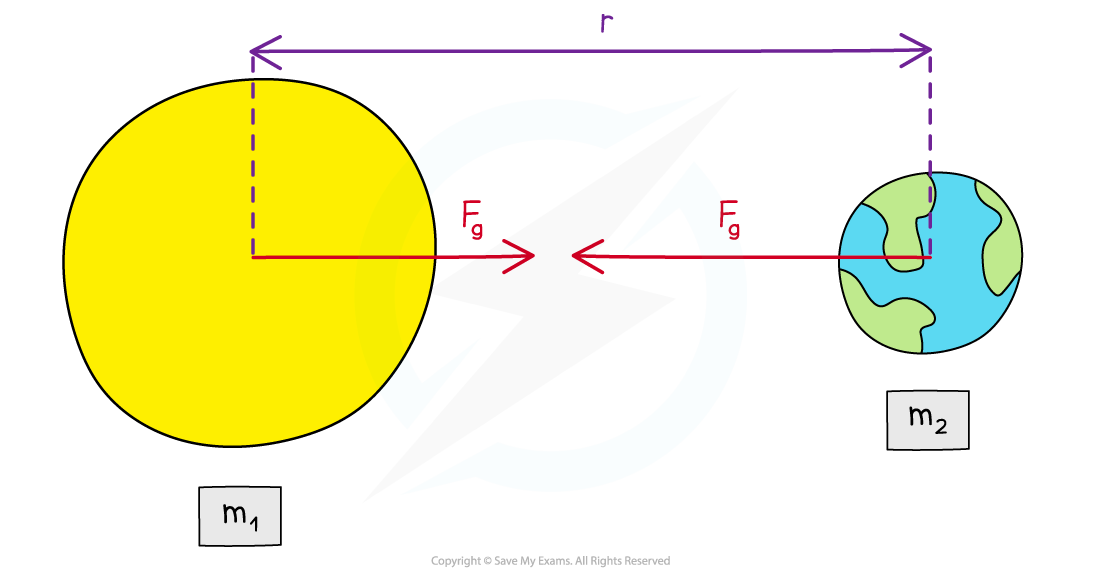Newton's Law of Gravitation (DP IB Physics) : Revision Note
Newton's Law of Gravitation
The gravitational force between two bodies outside a uniform field, e.g. between the Earth and the Sun, is defined by Newton’s Law of Gravitation
Newton’s Law of Gravitation states that:
The gravitational force between two point masses is proportional to the product of the masses and inversely proportional to the square of their separation
All planets and stars are assumed to be point masses
In equation form, this can be written as:
Where:
F = gravitational force between two masses (N)
G = Newton's Gravitational Constant
m1 and m2 = mass of body 1 and mass of body 2 (kg)
r = distance between the centre of the two masses (m)

The gravitational force between two masses outside a uniform field is defined by Newton’s Law of Gravitation
Although planets are not point masses, their separation is much larger than their radius
Therefore, Newton’s law of gravitation applies to planets orbiting the Sun
The
relation is called the inverse square law
This means that when a mass is twice as far away from another, its force due to gravity reduces by (½)2 = ¼
Worked Example
A satellite of mass 6500 kg orbits at 2000 km above the Earth's surface. The gravitational force between the Earth and the satellite is 37 kN.
Calculate the mass of the Earth.
Radius of the Earth = 6400 km
Answer:

Examiner Tips and Tricks
A common mistake in exams is to forget to add together the distance from the surface of the planet and its radius to obtain the value of r. The distance r is measured from the centre of the mass, which is from the centre of the planet.
Make sure to square the separation r in the equation!

You've read 0 of your 5 free revision notes this week
Sign up now. It’s free!
Did this page help you?
